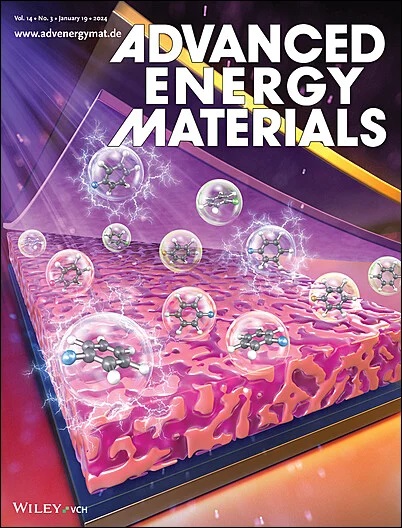A “Cool” Route to Battery Electrode Material Recovery
IF 24.4
1区 材料科学
Q1 CHEMISTRY, PHYSICAL
引用次数: 0
Abstract
The increasing demand for alkali metal-ion batteries necessitates efficient and sustainable recycling solutions for both end-of-life batteries and production scrap. This study introduces a novel, cost-effective, and scalable electrode delamination technique, termed “ice-stripping,” which employs sub-zero freezing to achieve near-complete (>90%) recovery of electrode coatings. Water is sprayed onto the electrode surface and placed on a sub-zero surface; the water freezes, forming a strong interfacial bond of the electrode coating to the cold plate. This enables the current collector to be stripped away from the electrode due to the stronger adhesion of the electrode to the plate. Unlike conventional thermal or chemical delamination methods, ice-stripping minimizes energy consumption, eliminates hazardous chemicals, and preserves the morphology and integrity of reclaimed materials. The technique is successfully applied to scrap and end-of-life lithium-ion and sodium-ion battery electrodes with various binder systems. Case studies focus on the recovery efficiencies and potential for direct recycling of Prussian white and hard carbon electrodes, graphite from end-of-life cells, and cathode and anode manufacturing scrap. Scalability and integration are also discussed. Given its efficiency and sustainability, ice-stripping represents a transformative step forward in battery recycling technology, reducing environmental impact and promoting material circularity.

求助全文
约1分钟内获得全文
求助全文
来源期刊

Advanced Energy Materials
CHEMISTRY, PHYSICAL-ENERGY & FUELS
CiteScore
41.90
自引率
4.00%
发文量
889
审稿时长
1.4 months
期刊介绍:
Established in 2011, Advanced Energy Materials is an international, interdisciplinary, English-language journal that focuses on materials used in energy harvesting, conversion, and storage. It is regarded as a top-quality journal alongside Advanced Materials, Advanced Functional Materials, and Small.
With a 2022 Impact Factor of 27.8, Advanced Energy Materials is considered a prime source for the best energy-related research. The journal covers a wide range of topics in energy-related research, including organic and inorganic photovoltaics, batteries and supercapacitors, fuel cells, hydrogen generation and storage, thermoelectrics, water splitting and photocatalysis, solar fuels and thermosolar power, magnetocalorics, and piezoelectronics.
The readership of Advanced Energy Materials includes materials scientists, chemists, physicists, and engineers in both academia and industry. The journal is indexed in various databases and collections, such as Advanced Technologies & Aerospace Database, FIZ Karlsruhe, INSPEC (IET), Science Citation Index Expanded, Technology Collection, and Web of Science, among others.
 求助内容:
求助内容: 应助结果提醒方式:
应助结果提醒方式:


